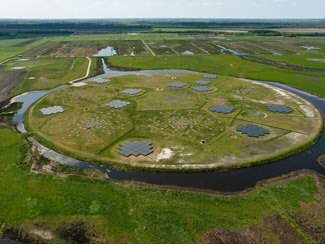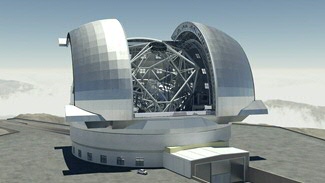Advanced instrumentation
As our ambitions to investigate and map the entire Universe in more and more detail are growing, we have to overcome multiple technological challenges. Only then we are able to further increase our understanding of the Universe. Countries from over the entire world are working together, forming consortia, to acchieve their main objective and complete their mission. Both by building telescopes and observatories on Earth or into space, astronomers are pushing the frontiers of technology forward.
Kapteyn staff is involved with advanced instumentation via instrumentation instututes, instrument buidling consortia as well as affiliated with public-private ICT projects in the Netherlands. Both involve applying knowledge and techniques from one discipline to another.

The strategy of the Kapteyn Institute involving instrumentation consists of:
- Acces to state-of-the-art telescopes and instruments. The Kapteyn staff has access to a widerange of observing facilities, including those operated by ESO (e.g. VLT, La Silla, as well asALMA/APEX), ESA (e.g. Gaia, Herschel, Spitzer, Chandra, XMM-Newton, HST), the Isaac Newton Group (e.g. WHT, INT), and radio telescopes worldwide (e.g. LOFAR, WSRT, VLA,GMRT, VLBA/EVN, MeerKAT).
- Developing new instrumentation. In astronomy most major new discoveries are the result of new state-of-the-art instruments. Involvement in new instruments ensures a head start. Kapteyn staff have leading roles in many instrument programs for various state-of-the-art observing facilities including APERTIF, WEAVE, LOFAR, JWST/MIRI, EELT/MICADO, and Euclid. Notably, Kapteyn is deeply involved in the ESFRI `Landmark' instruments European-Extremely Large Telescope and SKA.
An overview of the projects the Kapteyn Institute and its staff are involved in can be found here.

Instrumentation institutes
Astronomy is an empirically driven science, and access to modern observing facilities is crucial for making progress. The University of Groningen is in the unique situation in the Netherlands to be close to two institutes producing world class instrumentation in ground and space based astronomy: Netherlands Institute for Space Research (SRON) in Groningen and the Netherlands Institute for Radio Astronomy (ASTRON). Researchers of the Kapteyn Astronomical Institute are actively involved in the construction of instruments for large ground-based telescopes and satellites, often in collaboration with the other Dutch astronomical institutes (NOVA Astronomy) and with SRON, ASTRON and other partners. Researchers in this field often need to develop their own advanced instruments and need to acquire a broad spectrum of different skills. They fulfil tasks of scientists, but also need to be aware of tasks of engineers and managers.
These instruments also generally lead to the production of large quantities of data, and it is crucial that this data is handled in such a way that scientists can explore and use the data in ways they believe is fruitful for their research. The handling of these enormous data sets (often by distributed communities) requires innovative modelling and new abstractions of the information content. Astronomical surveys are often global efforts requiring collaborators in many places to share, validate and combine processed data and derived results. The Kapteyn Astronomical Institute houses the OmegaCEN astronomical wide-field imaging data centre which bundles expertise in astronomical information technology.
Target Field Lab
The Target Field Lab is a continuation of the Target project initiated in 2009 at the University of Groningen
